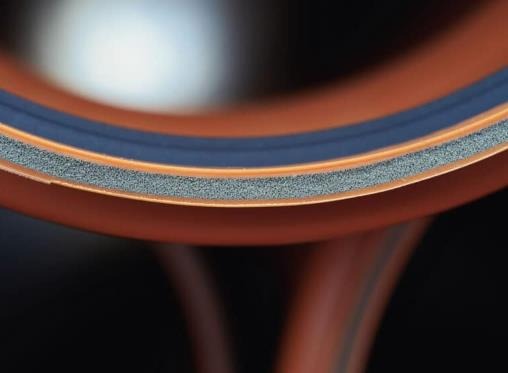
TEPPFA welcomes the new European Commission regulation restricting lead usage in PVC products, setting a new standard in environmental responsibility and public health protection.
This regulation supports the ongoing efforts of PVC pipe manufacturers to create a more sustainable circular economy. The European Commission, following approval of the European Parliament and the European Council, adopted the new regulation on 3 May, stipulating a maximum lead content of 0.1% in PVC products. The new regulation creates a level playing field for all PVC pipes on the European market, including imports, and supports ongoing industry work towards a more circular economy.
The current regulation makes the restriction on the use of lead and its compounds in PVC products mandatory, a process which TEPPFA members had already initiated on a voluntary basis in the early 2000s. Nearly 25 years ago, these PVC pipe manufacturers in Europe voluntarily phased out the use of lead-based stabilisers in the Nordic countries, whilst in the rest of Europe the substitution to calcium zinc or calcium organic based stabilisers was completed more than 10 years ago.
The new regulation provides a 10-year derogation for the use of recycled rigid PVC containing lead in the middle layer of multilayer PVC pipes, excluding drinking water pipes. The recycled material may have a maximum lead content of 1.5%. Such products must be marked, and the origin of the recycled material must be certified.
The new regulation introduces a closed loop recycling obligation for lead containing rigid PVC recyclate from profiles and sheet. TEPPFA PVC pipe manufacturers especially welcome the extension of the transition period of this closed loop recycling obligation until the end of May 2026. From that date onwards, PVC pipe manufacturers will no longer be allowed to use recycled material containing lead from PVC profiles and sheets for manufacturing multilayer PVC pipes. Today they predominantly use a mix of rigid recycled PVC from profiles and pipes to produce non-pressure multilayer PVC pipes and cable ducts. Due to the long lifetime of plastic pipes (50 up to 100-plus years) there are insufficient end-of-life PVC pipes available on the market to meet today’s demand.
The exceptional three-year transition will allow PVC pipe manufacturers to increase their efforts to extend and intensify the already existing collection schemes for end-of-life PVC pipes. It will allow PVC pipe manufacturers to deliver on the new TEPPFA sustainability strategy to pave the way for the increased use of recycled content into new piping systems.
The use of ‘lead-free’ (<0.1%) recycled rigid PVC is excluded from the new restriction. PVC pipe manufacturers can continue to use it irrespective of material origin and with no marking obligations.
Ludo Debever, General Manager of TEPPFA, commented: “The new regulation provides clarity on the future use of rigid PVC recycled material which contains legacy lead and supports greater circular economy. With this regulation the European Commission confirms that the reuse of this recycled content in the middle layer of non-pressure PVC pipes can be done safely without harm to the environment and public health. Our members are currently working on opening up product standards to allow increased uptake of recycled content. Provided the recycled material with the required specifications is available, they can now gradually increase the use of recycled content in multilayer PVC pipes. In this way TEPPFA members contribute to the sector ambition to maximise recycled content in products without compromising on quality and longevity.”
Download the pdf to view the original press release.


